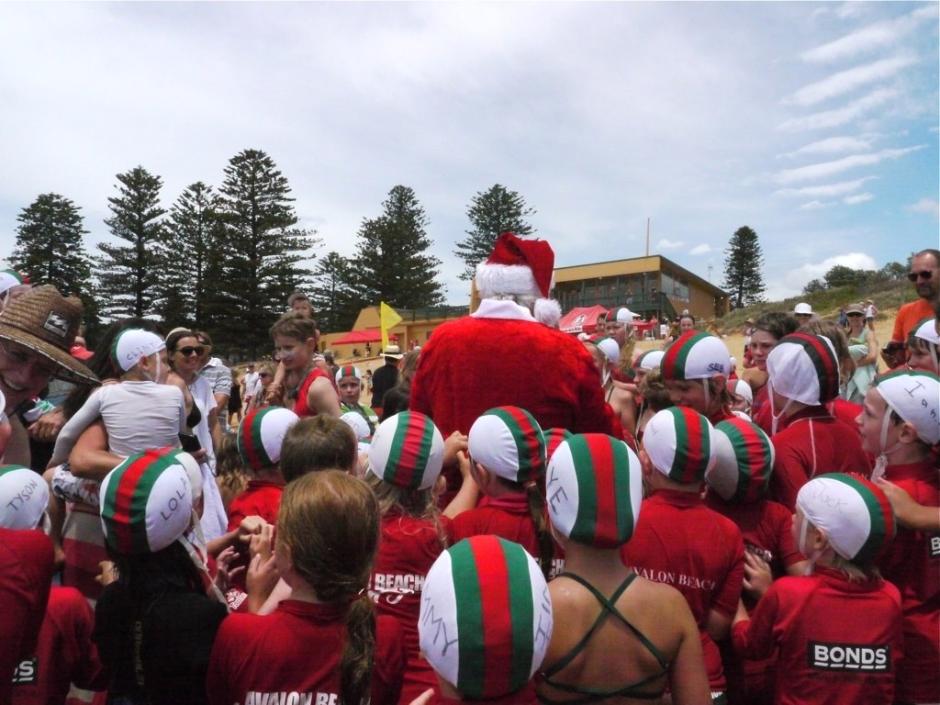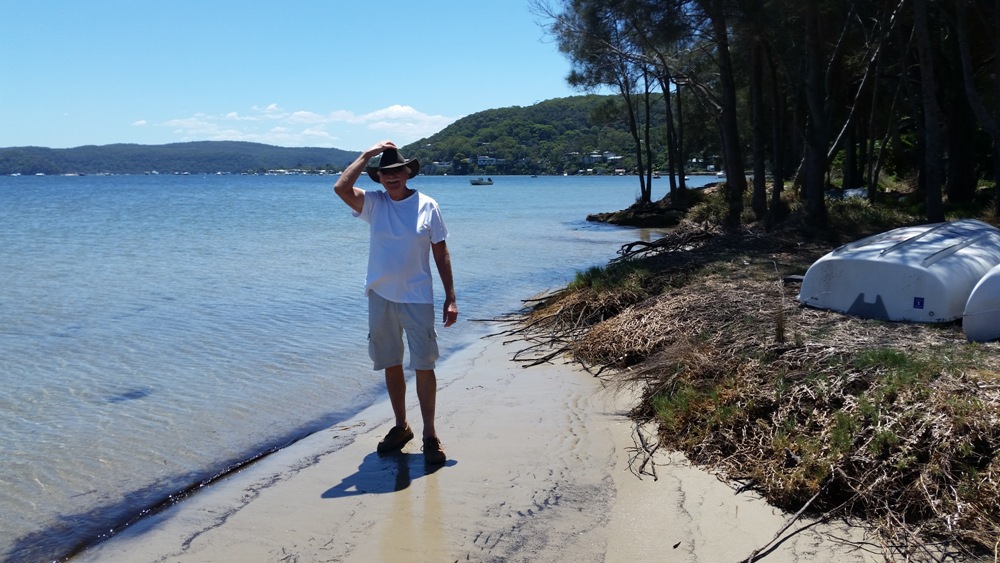January 31 - February 6, 2021: Issue 481
Three New OAM's: Sue Martin, David Palmer & Roger Sayers
The Australia Day 2021 Honours List, recognises 844 Australians.
Included in the list are:
- 570 recipients of awards in the General Division of the Order of Australia (4 AC, 36 AO, 159 AM and 371 OAM)
- 28 recipients of awards in the Military Division of the Order of Australia (2 AO, 11 AM and 15 OAM)
- 176 meritorious awards
- 70 Distinguished and Conspicuous awards
Some of the first recipients recognised, at least in part, for their contribution in support of Australia’s response to the 2019-20 Bushfires and COVID-19 pandemic (more nominations are likely to be considered for future lists).
Announcing the list, the Governor-General, His Excellency General the Honourable David Hurley AC DSC (Retd), said:
“On behalf of all Australians, I congratulate everyone recognised in the Australia Day Honours list.
“The individuals we celebrate today come from all parts of our great nation and have served the community in almost every way conceivable. They’re diverse and unique but there are some common characteristics, including selflessness, commitment and dedication.
“Recipients have not put their hand up to be recognised. Most would consider the achievements that they are being recognised for to be ‘ordinary’ or just what they do. Therein is the great strength of our system – recipients in the Order of Australia have been nominated by their peers, considered by an independent process and, today, recognised by the nation.
“The sum of these contributions speaks to our nation’s greatest strength – its people."
Among the Pittwater recipients are Mr Kenneth Craig ALLEN AM, Palm Beach (OFFICER (AO) IN THE GENERAL DIVISION OF THE ORDER OF AUSTRALIA) ‘For distinguished service to international relations, particularly through global information sharing networks for expatriate Australian professionals’.
There are four recipients in the MEDAL (OAM) OF THE ORDER OF AUSTRALIA IN THE GENERAL DIVISION, Sue Martin OAM, of Clareville, ‘For service to the community of Pittwater’, David Palmer OAM, of Ingleside, ‘For service to conservation and the environment’ and Roger Sayers OAM, of Avalon Beach, ‘For service to surf lifesaving’ and William Stuart SHERMAN OAM, of Bayview, 'For service to public relations, to sport, and to the community'.
Pittwater Online News spoke to Sue, David and Roger this week to get their reactions to the recognitions and ask:
How does it feel to have your volunteer work recognised with this award?
Sue Martin:
Actually it is really satisfying. I have always liked 'giving back' and helping. That is why although as an English/computing studies teacher, I buckled under the load of marking and preparation, I loved teaching. I enjoyed the stimulation of teaching the bright kids. However I enjoyed the less able kids. I strove to make them feel good about themselves and be good members of society irrespective of their academic achievements. I still meet students, some now in their 60s, who like to talk to me, and thank me. I doubt that many other professions, for example wealthy accountants, get that feedback. So long answer, I do enjoy being appreciated and an OAM is a sure demonstration of that!!
David Palmer:
I'm really thrilled to receive this award, it is a huge honour. However I must acknowledge that anything that I have achieved over the years has been through working with other dedicated volunteers, who's main motivation is I'm sure, as is mine, improving environmental outcomes for now and into the future.
Roger Sayers:
Fantastic!! It's a great honour. I'm thrilled, as are all my family, and I'm very appreciative.
They say if you find something you enjoy doing, you'll never work a day in your life. Well that applies double for voluntary work you enjoy doing for your community. The OAM, for service to surf lifesaving, is a wonderful personal honour and also reflects on all our volunteer surf lifesavers and the Avalon Beach community. After the year everyone's had, it's nice to have something positive we can all share in celebrating.
As Contributors:
Sue's Profile on Elizabeth Aird, a career nurse, led out 2021 as a fitting way to commence this year's Issues. Sue also has provided regular updates on the work of the Save Mona Vale Hospital Committee, as Secretary, as well as send in Avalon Preservation Notifications and Notices for the community.
David has shared Connecting wildlife habitats to prevent road kill by David Palmer, Pittwater Natural Heritage Association, Reducing Roadkill On Mona Vale Road and A History Of The Campaign For Preservation Of The Warriewood Escarpment by Angus Gordon and David Palmer.
David also sends in regular updates on the Baha'i Temple Grevillea Caleyi Bushcare program, and helped in providing text for the 2019 Profile on this Bushcare Group, Saving Grevillea Caleyi: Join The Baha’i Temple Bushcare Group
Roger has had Avalon Beach SLSC Notices published here as well as some great History insights he has worked on with Geoff Searl OAM, regular reports on Avalon Beach Historical Society Meetings and even shared some wonderful person insights on family connections to the Boer War and requesting a History insight on this during the 130th anniversary in 2015, as well as the more recent and very wonderful All Is Quiet On The Western Front.
Some more of Roger's work is available in Retracing Governor Phillip's Footsteps Around Pittwater: The Mystery Of The Cove On The East Side 230th Anniversary Edit March 2018 by Geoff Searl and Roger Sayers, The Quiet Revolution – Or Making Waves?, The Gun Patrol Of Avalon Beach Surf Life Saving Club! A Short History
Their citations read:
Ms Susan Christine MARTIN, Avalon NSW
For service to the community of Pittwater.
Pittwater Community
- Various roles including Secretary, Treasurer and Publicity Officer, Avalon Preservation Association, 1989-2018.
- Founder and Leader, Pittwater Ramblers, 1996-2006.
- Management Committee Member, Careel Bay Pittwater Protection Association, 2003-2010.
- Honorary Secretary, Friends of Currawong, since 2008.
- Honorary Secretary, Save Mona Vale Hospital Community Action Group, since 2018.
- Avalon Computer Pals trainer, since 2016.
Education
- Teacher, Consultant, New South Wales Department of Education, 1968-2014.
Awards and recognition includes:
- Joint Volunteer of the Year, Pittwater Council, 2009.
Mr David Sydney PALMER, Mona Vale NSW
For service to conservation and the environment.
Pittwater Natural Heritage Association
- Secretary, since 2010.
- Representative, Ingleside Landcare Group, 1994-2009.
- Secretary and Founding Member, Pittwater Escarpment Sub-committee, 1994-2000.
Pittwater Council
- Secretary, Sustainability Working Group, 2006-2010.
- Former Member, Planning an Integrated Built Environment Reference Group.
Environment and Conservation - Other
- Vice-President, Northern Beaches Envirolink, current.
- Member, Sustainable Northern Beaches Group, current.
- Member, Bushcare with Elanora Road, North Narrabeen Bushcare Group, 2010-2012.
- Committee Member, Friends of Narrabeen Lagoon Catchment, 2005-2011.
- Member, Project Reference Group (for the Narrabeen Lagoon - Creating a Sustainable Catchment Project), late 2000s.
- Chair, Ingleside Landcare Group, 1990s-2000s.
- Co-ordinator, Bahai Temple Bush Regeneration Project, current.
Ingleside Residents' Association
- President, mid-1990s.
- Member, 1990s-2000s.
Community - Other
- Supporter and Fundraiser, East Timor Project, Friends of Oecusse TL, early 2000s.
Author
- What's Happening to Our Creeks, (in conjunction with the Coastal Environment Centre, Pittwater Council).
- Co-Author (with Jacqui Marlow) Mitigating Impacts on Biodiversity in the Ingleside Locality by improving Fauna Connectivity.
- Co-Author (with Angus Gordon OAM) A History of the Campaign for the Preservation of the Warriewood Escarpment.
- Author, Bird Survey of the Upper Mullet Creek Valley.
Awards and recognition include:
- Finalist, Citizen of the Year, Pittwater Council, 2006.
- Environmental Volunteer of the Year, Coastal Environment Centre, Pittwater Council, 2002.
- Recognition and Reward, for Outstanding Customer Focus, Northern Sydney Institute TAFE, 2002.
- 20 Years' Service, for Recognition for valuable service to education and training in NSW TAFE, TAFE NSW.
Mr Roger Philip SAYERS, Avalon Beach NSW
For service to surf lifesaving.
Avalon Beach Surf Life Saving Club
- Former and longest-serving Club Captain.
- Former Patrol Captain.
- Publicity Officer, current.
- Chair, Heritage Committee, current.
- Life Members and Service Honours Awards Committee Member, current.
- Member, since 1985.
- Life Member, 2007.
Other
- Executive Committee Member, Avalon Preservation Society.
- Contributor, Pittwater Online News.
- Member, Avalon Beach Historical Society.
Awards and recognition include:
- 30 Year Long Service Award, Surf Lifesaving NSW, 2015.
- Patrolman of the Year, Avalon Beach Surf Life Saving Club, 1991, 1992.
- Norman Cook Award, Most Outstanding Member, Avalon Beach Surf Life Saving Club, 1994 and 1997.
- Presidents Award for Outstanding Service, 1999
For those who have not met Sue, David and Roger yet their Profiles, which are only small insights into a lot of work for a long time, run below.
This what community is about!:
Sue Martin
The Pittwater community has been built and maintained on the individuals who live here contributing in one form or another to its residents organisations, its bushcare groups, the surf life saving clubs or those organisations that help foster connection and sharing skills that allow others to be able to access and negotiate new ways to connect - such as being able to use computer technology as one instance.
This week a small insight into a former Barrenjoey High School teacher and current volunteer member of the Friends of Currawong, AvPals (computer skills for seniors taught by seniors), the Save Mona Vale Hospital Committee, founder of the Pittwater Ramblers, secretary for years of the Avalon Preservation Trust (now APA), committee member of the Careel Bay Pittwater Protection Association.
Where and when were you born?
I was born on 5 April 1949 in England.
Where did you grow up and what did you do for fun as a youngster?
I am the oldest of six children and spent my primary years in London. My father was a returned serviceman (WW11) who trained as a quantity surveyor and worked for a London firm. In 1959, he was taken aside by one of the partners who said that although he was a talented quantity surveyor, he would never be made a partner because he was from the wrong class with a father who was a council worker. The partner advised dad to “go to the colonies”!
Applying from London, Dad got a job with a Sydney firm of quantity surveyors. In 1961, we emigrated as ten pound poms. Dad asked the firm to arrange some accommodation for us as he was bringing a wife and six children ages 11 to 3 years. Avalon was then very affordable, being mainly basic holiday accommodation and so we were housed in a small weatherboard cottage in Elaine Avenue, next door to Brenda and Garvon Kable, two fine community members who made us welcome.
On the day we arrived, there was a mother koala with her baby in the back garden! Over the creek were the sand hills leading to Avalon Beach. This was “heaven on a stick” for kids from a city. Mum and dad subsequently bought a house in Avalon and that is where we grew up, enjoying fishing at Careel Bay, riding our bikes, playing in the sand hills and going the beach where we swam and watched Midget Farrelly surfing.
What are the most noticeable changes between the landscapes and playgrounds of your childhood and how those places are now?
The most noticeable changes are of course the loss of native bush land, the homes of native animals and birds. Poor koalas had a dreadful time as the local population increased and cars and dogs played havoc with the slow moving and trusting koalas. The weatherboard and fibro holiday cottages have either been demolished or gentrified and the magnificent native trees have been replaced with palms and shrubs that don’t drop leaves in the swimming pool.
Where did you go to school?
As my parents were catholic I was sent to Stella Maris at Manly rather than Narrabeen Girls which was the closest public school.
What did you want to do when you left school – AND – what did you end up doing?
I wanted to go to university to study humanities and then join the diplomatic service. Friends would laugh at that ambition as I am not known for my tact. However, money was tight and so instead of a Commonwealth Scholarship I accepted a two year teachers college scholarship which included a living allowance.
In those days, teaching scholarships had bonds. After a four year degree, you had to teach for five years or else pay a large bond which was guaranteed by a family member. There were stories of parents and grandparents being strong armed into repaying the bonds of students who realised that teaching was not for them. To be on the safe side, as I had no intention of remaining in teaching I took a two teacher training scholarship which meant I only had to teach for three years before doing what I really wanted to do, (or not).
I therefore went to Wagga Wagga Teachers College for two years. In 1968, I began teaching at Murrumburrah Intermediate High. I turned 19 in that first year and there was a boy in year 12 older than me but fortunately he did not know it.
I met my husband in a barn dance at the local country club. When we married in 1970, I had to apply for a school in Sydney. We had no idea where to live and so on my transfer form I put “north of the Harbour Bridge”. The authorities must have laughed and decided to teach me a lesson by sending me as far north of the harbour bridge as possible, namely Barrenjoey High School, where I enjoyed teaching until 1996.
Teaching – what was the best part of this for you?
I am so proud of having been a teacher in the public education system and Barrenjoey was and is a great school. Initially I taught English and History but a after completing an undergraduate degree and post graduate diploma I also taught computing studies.
I feel frustrated with the current focus on preparing for a job. To me, secondary education is a time to help young people develop as thinking and analytical individuals, with a capacity to learn. Specific job related “stuff” can come later. When I was in high school, l was told what to think and what the right answers were. When at teachers college and university, I was asked for my opinion, I was stumped because no one had ever asked me before. I had just been told what to think and say. Now we seem to be going focusing only on what is relevant to a specific job! This is somewhat ironic what most people these days will have several difference careers. .
I tried to ensure that my students developed a sense of self worth, entitled to their own opinions and ideas. I wanted to guide and stimulate them to being people who would become good members of society with the transferable skills. I tried to encourage them to think for themselves, develop informed opinions and learn how to learn and feel good about themselves. Stuffing them with facts was not as much a priority as learning how to learn, how to investigate, research and assess. Of course teaching English provided wonderful opportunities for this.
I love the fact that I still see former students and I have a sense of achievement that I may have helped them to grow into the fine people they are. The fact that that they want to talk to me is some sort of recognition. I wonder how many other careers have that sort of feedback. Do other retired processionals have the same sort of achievement and expressions of appreciation?
Where did you teach? How many children/generations have you seen grow tall?
My first school as Murrumburrah Intermediate High and then Barrenjoey for 26 years. I then was appointed as a Department of Education senior curriculum adviser. For the next 10 years, I worked with teachers helping them to integrate IT into teaching and learning. I also managed a website containing resources for HSC students. Sadly the Department stopped funding the development of HSC resources and so the website which would have been very helpful during Covid 19 was cancelled.
My first cohort of students are now in their mid sixties and at Barrenjoey I also taught the children of some of my former students. Barrenjoey is the sort of school that teachers are happy to send their children to and former students also send their children there.
Bushcare and our natural Environment – why is this important to you and what have you done over the years to protect this and why did you do this work?
Coming to Avalon in 1961 was life changing. for my family. Here trees not bricks and mortar dominated the landscape. Like many others, over the years, I have been concerned by inappropriate development that has detracted from rather than enhanced living in the local area. For this reason, I joined the Avalon Preservation Trust (APT) in 1988 and for 30 years I wrote the quarterly news bulletin, updating the local residents and raising their awareness of issues affecting the local environment.
I became concerned by the number of public reserves and paths that seemed to be disappearing into private ownership and so in 1995, I formed the Pittwater Ramblers. On the last Friday of every month after work, the ramblers would go for a walk in the local area using as many public paths and reserves to raise awareness as to their existence. On occasions, I spoke at Pittwater Council meetings to oppose proposed selling off of public land or to ask for council support in removing illegal encroachments. We had some wins and it did make people more aware of the many public tracks and reserves in this beautiful area.
In 2005 I joined the management committee of the Careel Bay Pittwater Protection Association, opposing a $6.5 million proposal from Austral Monsoon to significantly change and upgrade the Careel Bay wharf and put at risk the local sea grasses. We won that battle and Careel Bay Wharf and boat shed remain.
In 2008, I became secretary of the Friends of Currawong as we campaigned to block the sale to private interests with plans to build macmansions. This long and hard fought campaign led by Shane Withington ultimately resulted in 2011 in the purchase of Currawong by the NSW State Government thereby securing it for the people of NSW. I am still the secretary of FOC as we still have more to do there in conjunction with NBC.
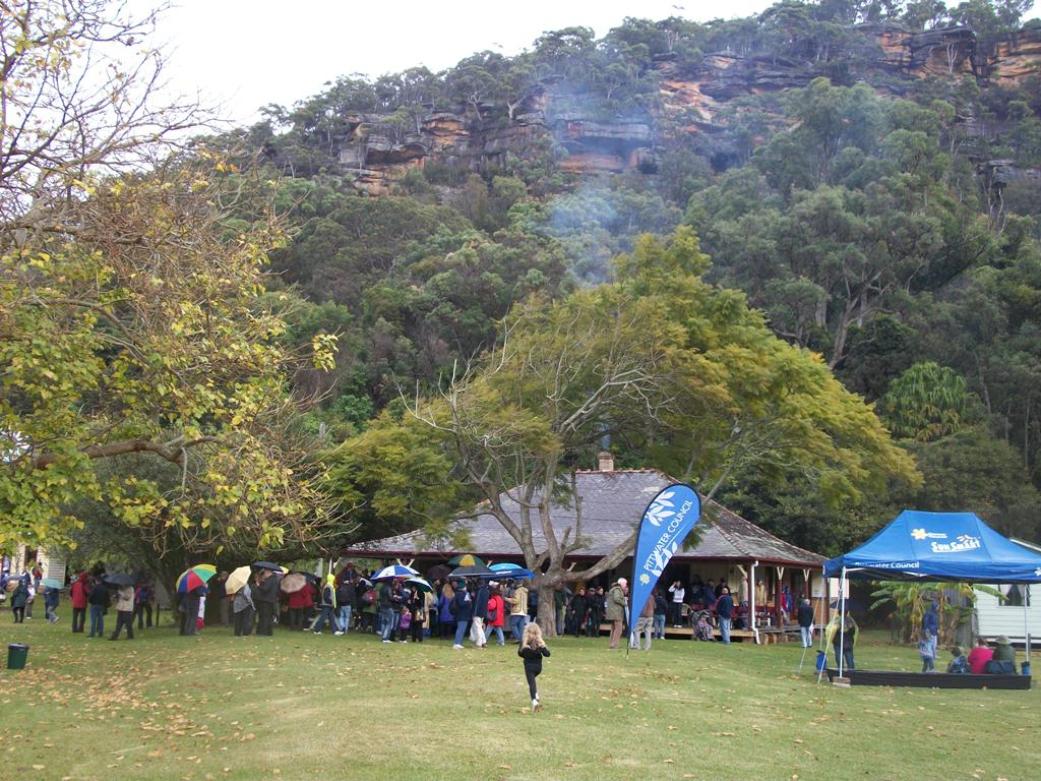
Currawong Day - May 29th, 2011 - photo by A J Guesdon
Save Mona Vale Hospital Committee (Secretary) – why are you involved with this group – why is it important to advocate for a public health facility in Pittwater?
In 2017, I became and remain secretary of the Save Mona Vale Hospital Committee. Like many others, I had been tricked by the local member, Rob Stokes, into believing that MVH would continue as a fully functioning hospital. Since Mona Vale Hospital was downgraded to a virtual medical centre, there has been ongoing proof of the folly of this decision and the ongoing disadvantage for the people of this safe Liberal party electorate.
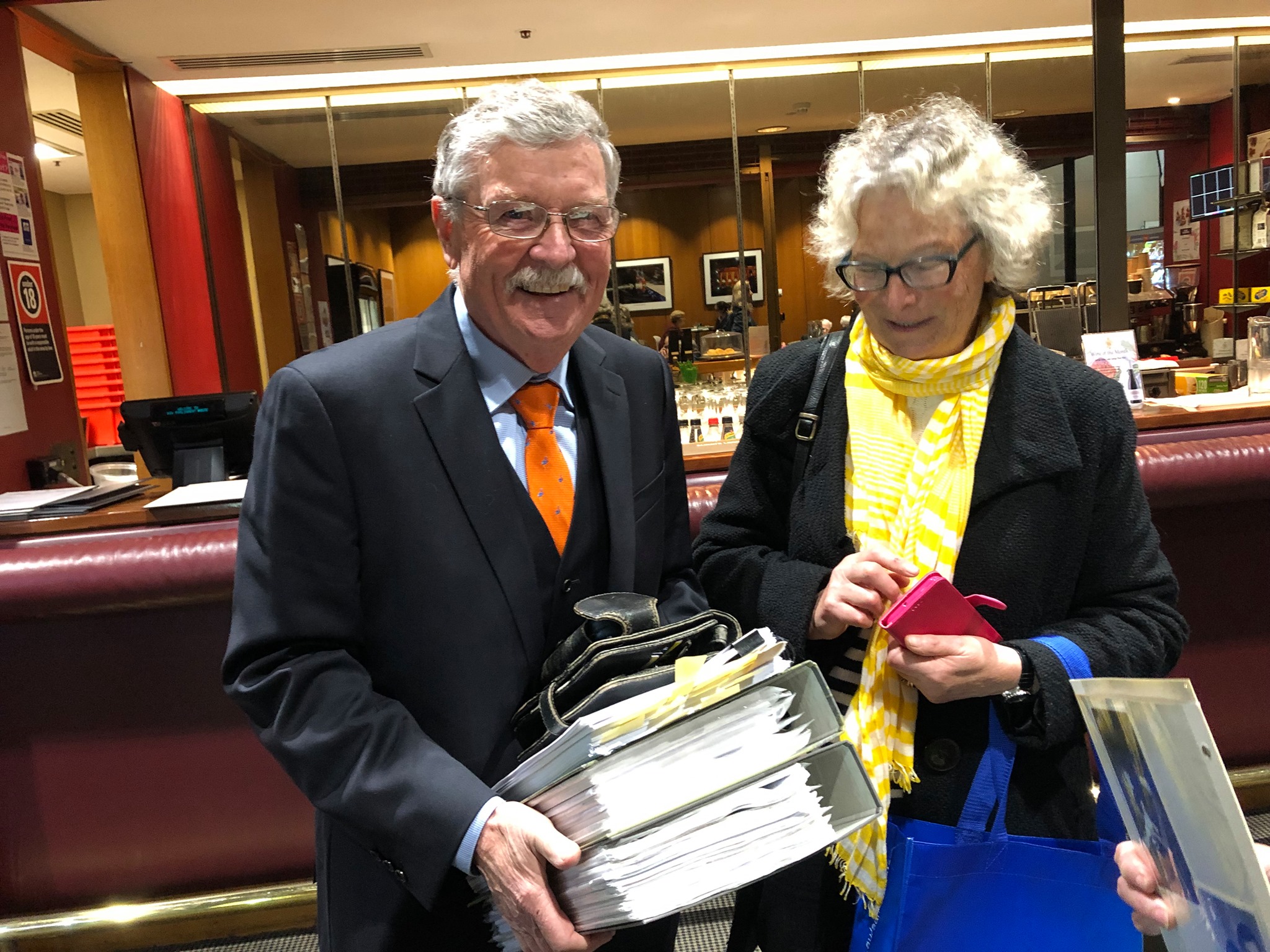
With SMVHC Chairman Parry Thomas at the Upper House Inquiry into the Operation and Management Northern Beaches Hospital, presenting to retain MVH - SMVHC photo
You have done many things in many areas for our community through the decades – what are the 3 projects/works that stand out STILL for you as important to you – and why are they?
Hmm, hard to think! Definitely Currawong and SMVH for reasons I have stated. I am also a trainer with the Avalon Computer Pals and I enjoy working both one on one with seniors and being part of the AvPals team at Newport providing two hour workshops and presentations on the use of technology. I like the idea that we are empowering senior citizens in the application of technology in their daily lives. Seniors are often stereotyped as a generation reluctant to use technology but I can assure you, that is not our experience at AvPals. In the brave new world of Covid 19, we are running sessions via Zoom for our seniors!
What are your favourite places in Pittwater and why?
My favourite place in Pittwater is Avalon Beach rock pool where I like to swim winter and summer. It is a lovely friendly community . Even in winter there is a constant stream of people coming for their swim and a chat to solve the problems of the world. Often the people one meets are known in no other context and may only be recognised in their swimmers!!.
What is your ‘motto for life’ or a favourite phrase that you try to live by?
I believe it is important to try to make a difference. I am an atheist and so believe this life is my only chance to make a difference. I believe it is important to help others. That is why I enjoyed teaching. When I die, I would like people to consider that I had made my mark in small but worthwhile endeavours.
David Palmer
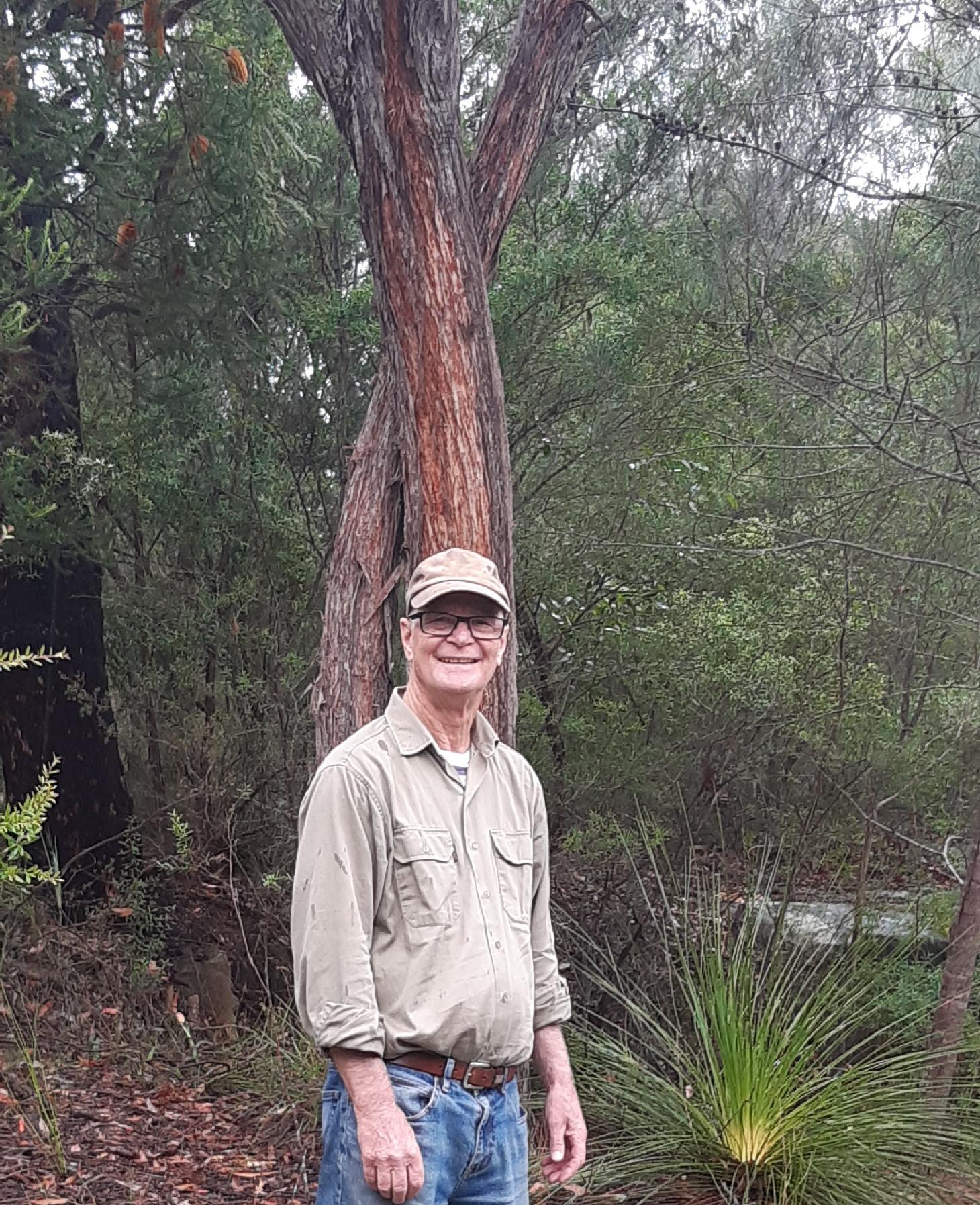
June, with its celebrations of World Environment Day, and how we can all look after our natural environment better, World Oceans Day and Ocean Week (including Whale Census Day), as well as World Wetlands Day on February 2nd each year, Endangered Species Day on the third Friday in May, the Backyard Bird Count during National Bird Week in October, are all ways people can connect with and know more about the world they are living in and how we too can contribute to the practice and knowledge that 'We Do Not Inherit the Earth from Our Ancestors; We Borrow It from Our Children'.
Residents are blessed with living in a place that is truly beautiful in all forms, from upland swamps and bush or coastal heath terrain, to estuarine, creeks, wetlands and lagoon environments and the eco-systems within these. We are 'spoilt for choice' when seeking some respite from the pollution of traffic or a too-hard day with a breath of fresh eucalypt tinged air or a melodic refrain from a tiny heathland bird or those that wing along the shores.
With the increase in urbanisation, balancing that with an increase in areas set aside for the original animal and plant inhabitants as well as people becomes a way to ensure the survival of these species and for future generations to experience them in their natural habitats. The State Governments Saving Our Species Program and the Federal Governments' Threatened Species Strategy, in conjunction with volunteer groups in Floating Landcare, the Pittwater Environmental Foundation, Friends of Freshwater, South West Lovett Bay Coast, the Pygmy Possum Project, to the hundreds of volunteers working in over 80 sites to remove introduced weeds and replant endemic species, including the Baha’i Temple Community - Pittwater Natural Heritage Association Bushcare group saving Grevillea caleyi at Ingleside, backed up by a grant from Greater Sydney Local Land Services and the NSW Office of Environment and Heritage, are just part of how actual 'hands in the dirt' happens.
Among their memberships are individuals who are not only passionate and active in looking after the future of the environment right here and right now, they are also skilled and trained individuals in a range of areas that coalesce to support getting that work done. You don't need a degree in Horticulture or to be an Environmental Lawyer though - just a willingness and the energy to get out and help out is all that is required and needed.
The Pittwater Natural Heritage Association is one of these groups. PNHA was formed to act to protect and preserve the Pittwater areas major and most valuable asset - its natural heritage. PNHA is an incorporated association seeking broad based community membership and support to enable it to have an effective and authoritative voice speaking out for the preservation of Pittwater's natural heritage.
PNHA Aims
- To raise public awareness of the conservation value of the natural heritage of the Pittwater area: its landforms, watercourses, soils and local native vegetation and fauna.
- To raise public awareness of the threats to the long-term sustainability of Pittwater's natural heritage.
- To foster individual and community responsibility for caring for this natural heritage.
- To encourage Council and the NSW Government to adopt and implement policies and works which will conserve, sustain and enhance the natural heritage of Pittwater.
Pittwater Natural Heritage Association seeks to raise awareness and provide information and advice to our members on issues such as:
Native Tree Canopy
Identification of trees local to your particular area. What to plant to replace dead or dying trees, and how to care for trees. The characteristic form of the native tree canopy is a major contributor to Pittwater's sense of place.
"Bush Friendly" Gardens
Selecting plants for your garden that will live in harmony with nearby bushland and provide habitat for native animals and birds.
Building and Landscaping
Promoting practices which preserve and protect the visual qualities of the landform, preserve soil stability and prevent erosion of steep slopes and siltation of waterways.
Weed Infestation
Information on noxious and environmental weeds, weed identification and methods of control and eradication.
Living with Wildlife
Maintaining habitat and wildlife corridors for our rich and diverse native fauna. Understanding the impacts of introduced birds and animals and uncontrolled domestic pets.
Keeping our Waterways Healthy
Using and enjoying our waterways and estuaries whilst maintaining appropriate water quality and habitat for aquatic creatures. Caring for the streams, wetlands, saltmarsh and mangrove systems that are an integral part of our waterways.
Rock Platforms, Beaches and Dunes
Protecting and preserving the plant and animal communities on rock platforms. Restoration and regeneration of dune systems and maintenance of their stability.
If you would like to join please fill out their Membership Application Form. Alternatively if you would like to contact them for information on any of their projects, please email: pnhainfo@gmail.com
This Issue Pittwater Online News shares a small insight into a PNHA volunteer and some of the other Groups' projects he has been involved in over the decades. These illustrate that active practice of looking after the future for generations of children, animals and plants yet to be born and grow, and doing that right here and right now.
When and where were you born?
I was born at the beginning of the post war baby boom era, in 1946 in Windsor NSW. My father was in the RAAF based at Richmond and when he was discharged the family settled in Windsor where dad opened a furniture and upholstery business.
Where did you grow up and what did you do for fun as a youngster?
I grew up in Windsor, which in those days was a country town and a centre for local agriculture. The town was largely surrounded by paddocks and farms, with the Hawkesbury River on one side and South Creek on the other, As a youngster I spent most days with my friends, playing in the paddocks, swimming in the river and paddling on the creek in canoes which we made from sheets of corrugated iron waterproofed with tar,. As was usual in those days, kids were told to “get out of the house, and don’t come home until dinner time”.
One adventure, when I was a teenager, was when a couple of friends and I built a raft out of plastic drums and bamboo and paddled it down the Hawkesbury River to Sackville, about 20 km away by road, but a lot longer on the meandering river. The journey took us three days.
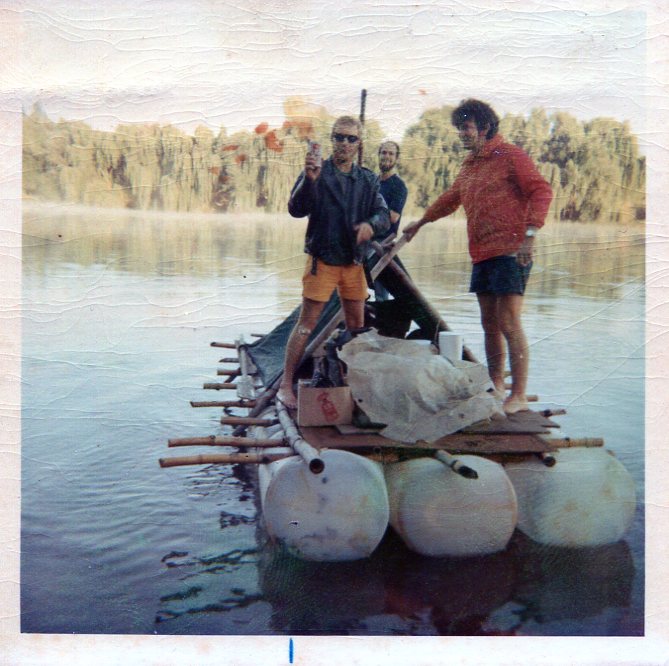
Image: Leaving Windsor on our journey to Sackville. Photo D Palmer
What did you want to do when you first left school and what did you end up doing?
I’ve had a few different careers, which has widened my perspective and given me a range of knowledge and skills that have been useful on my journey through life. Fortunately the early days of my working life were in a time of growth and optimism, and jobs were easier to get than nowadays. My first job was in a local bank, but after a couple of years I realised that banking was not for me. I had liked learning chemistry at school so I decided to move into the world of industrial chemistry. I studied at Sydney Technical College and moved up the ranks from laboratory assistant to production manager at a Sydney company making ingredients for detergents.
During this time I became interested in sailing, so I thought I would learn how to build my own sailing boat. This was in the seventies, when there were dozens of factories around Mona Vale making all types of fibreglass boats: catamarans, trailer-sailers, fishing boats and large cruisers, so after nine years in the chemical business I left and got work in a fibreglass boat factory.
Wanting to learn more about fibreglass, I enrolled in a course at Brookvale College of TAFE. Through the seventies the local fibreglass industry was growing, causing a strong demand for TAFE courses in fibreglassing. After a few years I was approached to apply for a position as a teacher of fibreglass at Brookvale College, and so began a 25 year career in TAFE.
However, not all of that time was spent teaching fibreglassing. By the early nineties, the local fibreglass industry was in decline, and so was the demand for fibreglassing courses. Luckily, while I was teaching fibreglassing I was studying for a Bachelor of Education degree, so when the time came to close the fibreglass section at Brookvale TAFE, I was able to build on my degree by enrolling in a post graduate diploma course in Teaching English to Speakers of Other Languages, enabling me to continue at TAFE, teaching English to adult migrants.
I finally retired in 2006 as head teacher of English for Speakers of Other Languages at Hornsby College of TAFE. Although this was the end of paid work, it enabled me to devote more time to my unpaid work as an environmental volunteer.
Where did your love of the Australian bush commence?
I had always been keen on outdoor activities and nature and have always valued our natural environment for what it is, an integral part of the web of life on our planet. However I didn’t realise that as individuals we should take an active part in caring for our bushland until after I was married and started living in Ingleside.
In 1991 a huge threat to our bushland came with the announcement of the Ingleside Warriewood Land release and this is when I realised that I had to do something. As president of the Ingleside Residents Association from 1992 I was a leader in the fight against residential development in our bushland suburb.
After the Ingleside section of the land release was scrapped we decided that the best way to look after the Ingleside bushland was to form a Landcare group. As president of the Ingleside Residents Landcare Group worked with some wonderful people and learned more and more about our natural environment and what we can do to preserve it.
When and why did you join Pittwater Natural Heritage Association?
I joined Pittwater Natural Heritage Association (PNHA) in its inaugural year (1994) as a representative of Ingleside Residents Association. This was when we were still campaigning against the Ingleside Warriewood land release and our committee saw PNHA as a like-minded organisation which would be a good ally.
This proved to be correct, not only in the Ingleside Warriewood campaign, but in the campaign for preservation of the Warriewood escarpment, which I consider to be right up there on the list of the most successful environmental campaigns in the history of Pittwater Council (more on that later). Likewise, when I was president of Ingleside Landcare Group I networked closely with PNHA and when Ingleside Landcare Group closed down we chose PNHA as the most suitable organisation to receive our assets. l had been an active committee member of PNHA for some years before that and have been secretary since 2009.
What are some of the major and minor projects you have undertaken as a member of volunteer groups?
A lot of my time as an environmental volunteer has been spent campaigning, either for something or against something, but I have been involved in other environmental projects as well.
As mentioned above, through the early nineties I was involved in the campaign against the Ingleside Warriewood Land Release, along with others in the Ingleside Residents Association, and a number of other community groups in the Pittwater Local Government Area.
Then with the Ingleside Residents Landcare Group I managed a number of environmental projects, in conjunction with Sharon Kinnison from the Coastal Environment Centre, focusing on testing water quality in creeks around Ingleside and regenerating riparian zones. The group also undertook weed control activities, flora and fauna surveys and campaigned against inappropriate developments in Ingleside.
In 2008 to 2010 The Ingleside Residents Landcare Group did a comprehensive study of birds in the upper Mullet Creek valley, the report on which was used by the consultants to the Department of Planning and Environment in their 2016 report on Biodiversity within the Ingleside Precinct.
At the same time I took over the job of coordinating a campaign to have some Ingleside land added to Kur-ring-gai Chase National Park.
This campaign was started in the 1970’s by Pittwater Flora and Fauna Society, under the leadership of a neighbour and local identity, Bert Payne. Over the years the Society declined as members moved away or became less active so I took over the campaign and was rewarded when the addition of 12 ha of bushland in Cicada Glen Road to Ku-ring-gai Chase National Park was gazetted in February 2007.
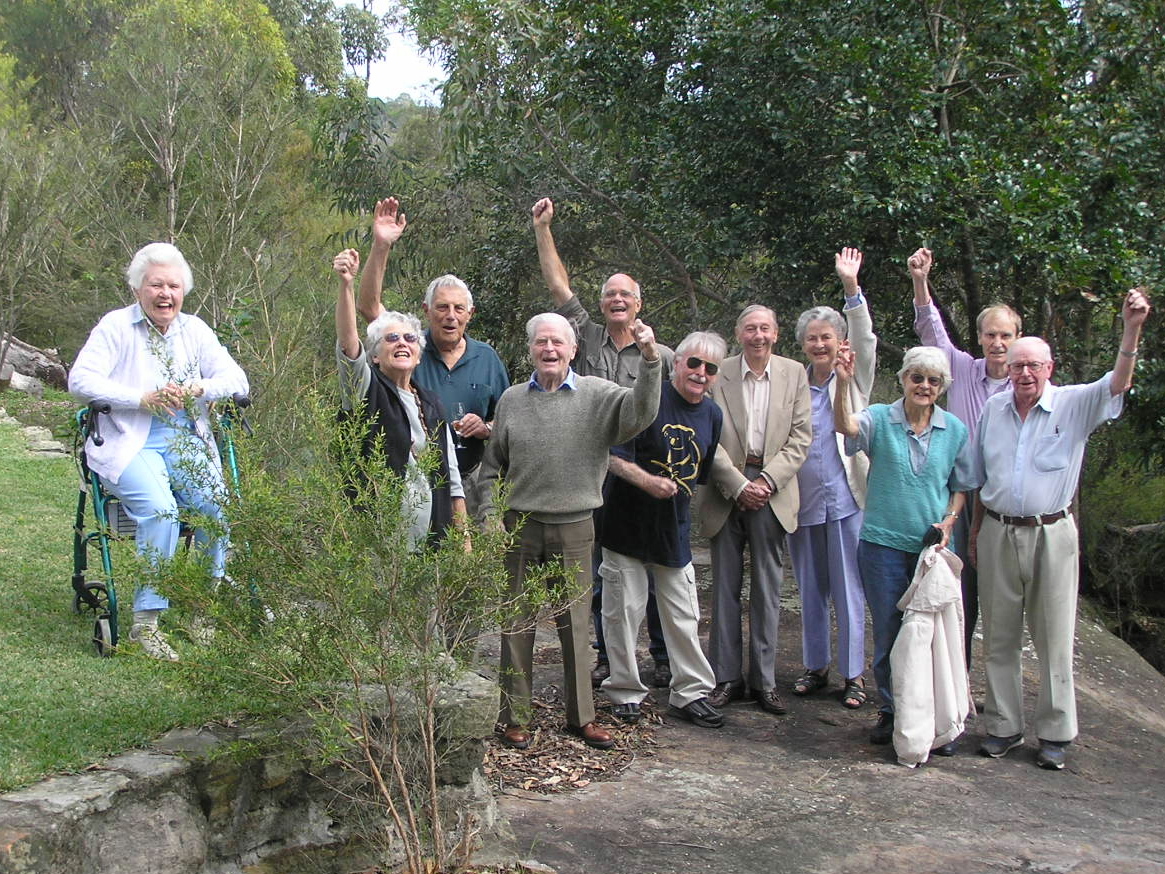
Image: Members of Pittwater Flora and Fauna Society celebrate the gazettal of crown land in Ingleside being added to Ku-ring-gai Chase National Park. Photo D Palmer
Then the announcement in 2011 that NSW Roads and Maritime Services was starting work on upgrading Mona Vale Road from two lanes to four set local environment organisations buzzing. Data collected by Northern Beaches Roadkill Committee showed that hundreds of native animals were being killed each year on the existing road trying to move between Garigal and Kur-ring-gai Chase National Parks and between Ingleside Chase Reserve and Ku-ring-gai Chase National Park. A four lane road would prevent any movement between these reserves, leading to a decline in species living in Garigal and Ingleside Chase Reserve. Jacqui Marlow, Marita Macrae and I as representatives of PNHA lobbied for fauna overpasses and underpasses on the upgraded road. This took many years and many meetings with RMS personnel. A commitment was made by RMS to build a fauna overpass and underpass on Mona Vale Road West, but I think we dealt with five different project managers over the seven years until in 2018 the announcement was made that the upgraded Mona Vale Road East would have a fauna overpass and underpass as well.
Image: Marita Macrae, Jacqui Marlow and David Palmer celebrate the announcement of a fauna bridge to be built over Mona Vale Rd East. Photo M Macrae
These have all been very rewarding projects, however, the most important and rewarding project that I have been involved in was the campaign for preservation of the Warriewood Escarpment.
I started the campaign in 1994 when the Ingleside Residents Association received notice of a development application for a 28 hectare portion of the escarpment. After a few years campaigning in association with a couple of other local groups we approached PNHA for support, which led to the formation of Pittwater Escarpment Committee. Our campaign got the support of Pittwater Council Mayor Patricia Giles who brought the council on side. General Manager Angus Gordon and his team went above and beyond to negotiate with all landholders and State government agencies, supported by our group who lobbied, took up petitions and organised community letter writing to show that the community supported their actions.
Portion by portion more land was brought into public ownership until finally in 2010 Pittwater Council approved purchase of the final portion of land. The resulting Ingleside Chase Reserve is now over 70 hectares in area.
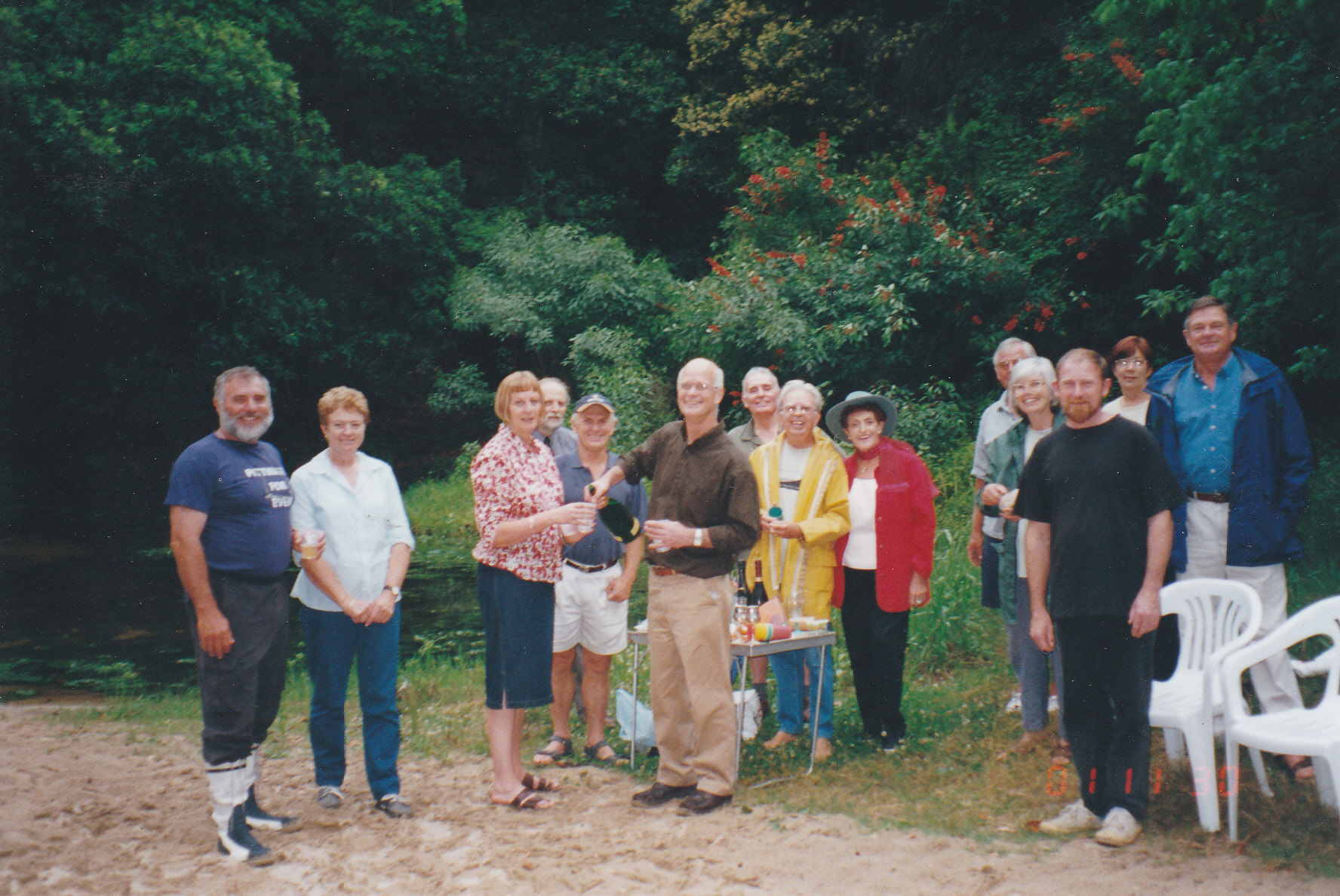
Image: Celebrating the acquisition of escarpment land at Irrawong waterfall. Photo D James
Currently my main interest is co-ordinating the Pittwater Natural Heritage Association’s project at the Baha’i Temple, Ingleside, improving the habitat of Caley’s Grevillea (Grevillea caleyi), an endangered species of native plant found in Ingleside, Terrey Hills, Duffys Forest and Belrose and nowhere else in the world.
What other projects would you like PNHA to look into developing/undertaking?
Now that we have a much bigger and better resourced council on the Northern Beaches we are looking for support from them and state government in a couple of areas in which PNHA has been working for some years.
Weeds in Pittwater are a never ending problem which PNHA has been tackling for many years with the aid of grants and volunteers. However PNHA believes that there should be a bigger focus by Northern Beaches Council on weeds which are a major risk to our biodiversity and do a lot of damage in our bushland reserves and other natural areas.
We are always looking for volunteers of all ages to help with our bushcare programs. We would especially like to see more younger people get involved.
Another area of concern is the portions of privately held bushland in Pittwater which we believe are environmentally sensitive and should be in public ownership. These have been the focus of some of our past campaigns, but there is still more to be done. We would like to see Northern Beaches Council develop a policy for acquiring such land.
Which are your favourite native plants?
I have a fondness for the Red Bloodwood tree, Eucalyptus gummifera. I remember coming to our house as a young boy when my parents had it as a weekender and climbing the bloodwoods in our yard. I love the prolific yellow blossom that attract so many birds in summer and autumn. During flowering season, if I wake at night I can hear the sounds of the grey headed flying foxes feeding on the blossom outside our bedroom window.
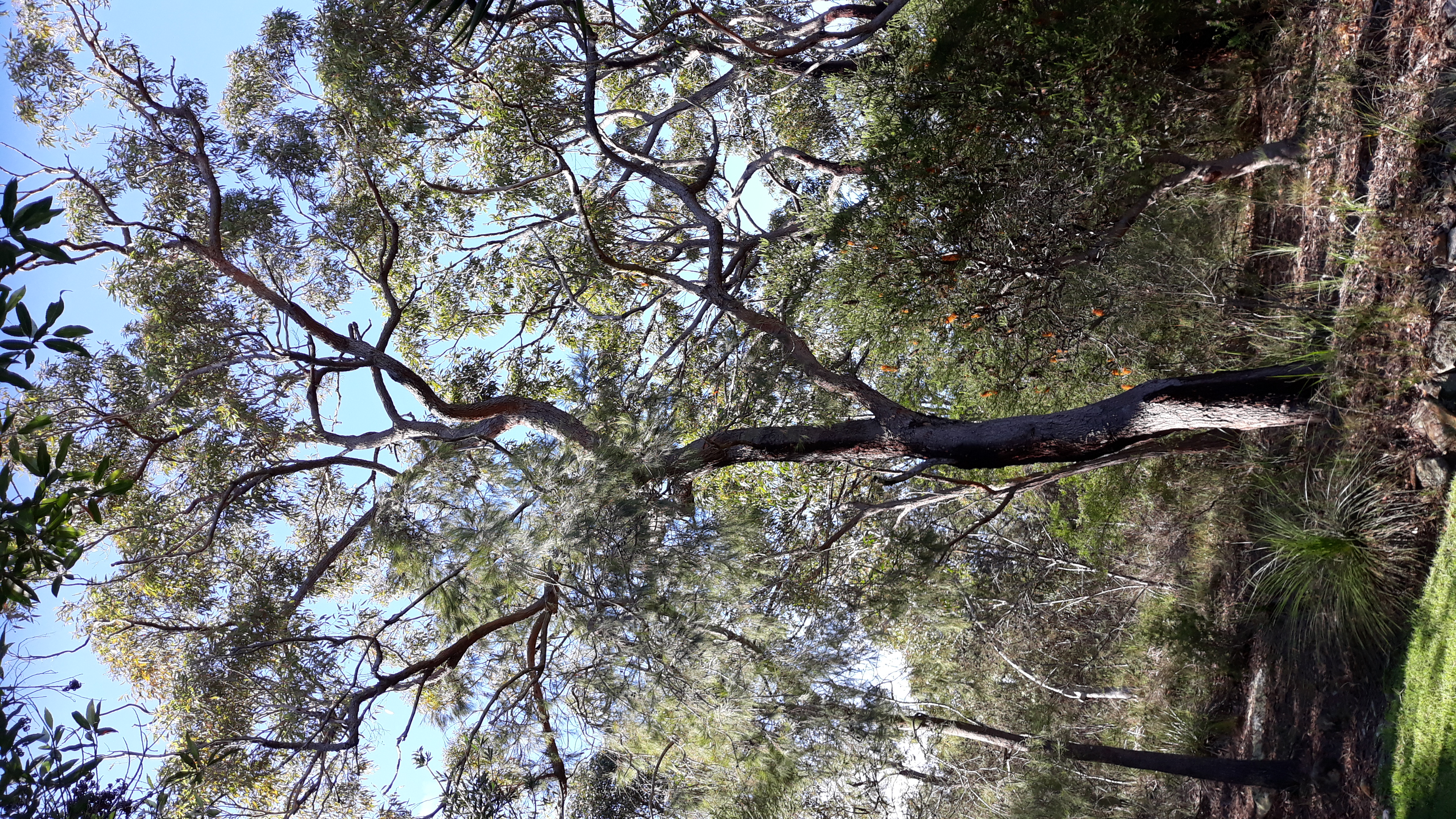
Image: Eucalyptus gummifera. Photo D Palmer
Also, having worked on the preservation of Grevillea Caleyi for so long, I have developed a proprietary interest in these rare plants and their welfare.
Image: Grevillea caleyi. Photo M Macrae
Why is “putting something back” as a volunteer important to you personally?
I started volunteering because I saw something that I thought was wrong – destruction of Ingleside bushland- and felt that I had a moral duty to do something about it. But I must say that I get personal satisfaction from taking on a task, learning what has to be done and seeing it through, sometimes with a positive outcome. And, as many have said before, having a passion about something gives us purpose. However it would be a much harder road to walk if it wasn’t for the wonderful, selfless, committed volunteers I’ve met along the way.
And, if I can give a bit of a plug at this point, anyone who may be interested in “putting something back” into the Pittwater environment can look at the PNHA website, Facebook page or contact PNHA at pnhainfo@gmail.com
What is your favourite place in Pittwater and why?
My favourite place is Ingleside Chase Reserve. I find it a tranquil retreat where you can feel that you are away from suburbia. The escarpment has many interesting rock formations, watercourses and flora and fauna. Just walking through it is enough to appreciate what a gem it is and how lucky we are to have it.
What is your motto for life or a favourite phrase you try to live by?
Don’t be afraid to try something new and if you believe that what you are doing is right then don’t give up.
Roger Sayers
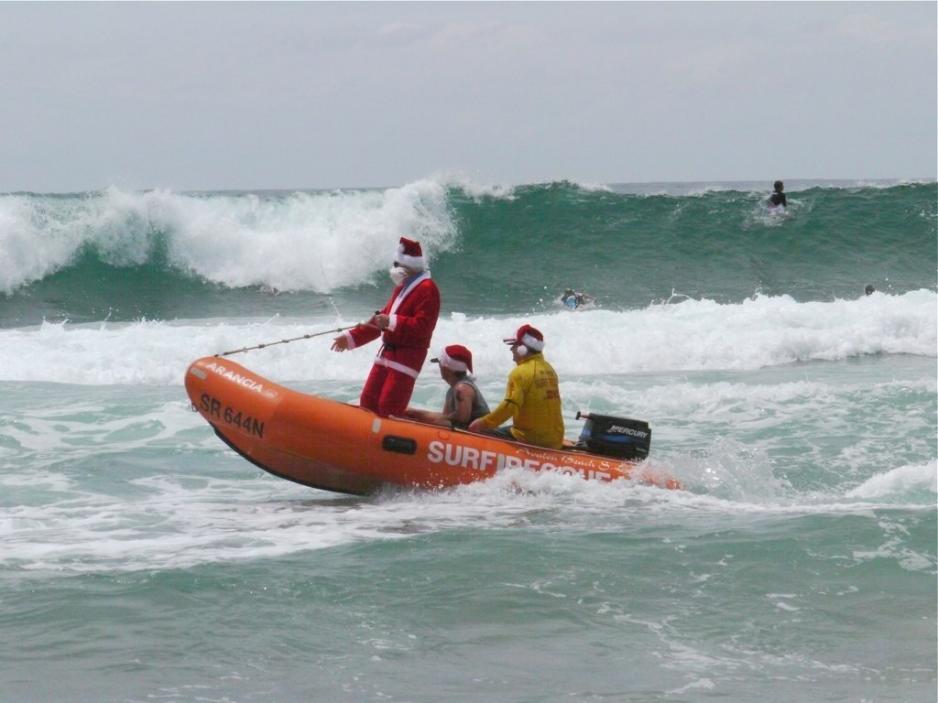
Roger is a very proud father, grandfather, father- in- law, and husband and will happily tell you about the various academic and other achievements of his family members, but has to be reminded that this interview is about ‘him’...
A member of the Avalon Beach SLSC, a former and longest serving Club Captain and Life Member, Roger is another ‘backbone’ gentleman, one of several without whom our surf clubs wouldn’t exist at skill level they do without people like Roger happily giving over a part of their Summer year in year out as volunteers on our coastal stretches.
Roger has three daughters and four grandchildren, and counts these as amongst his best achievements. All his daughters went through Avalon Beach SLSC as Nippers and the senior club; two daughters live in Pittwater and all three, and two husbands, are surfboard riders.
Roger is happily married to Annette and their dog Rex is part of this large family. He still surfs and whenever we drop in to Avalon Beach SLSC's clubhouse he's there, smiling, joking and ready to help us out with the thousand questions we ask him each year.
Mr Sayers is also one of the stalwarts of the Avalon Beach SLSC's 'Gun Patrol' in IRB's and in his current capacity as PR gent for the club allows us to share The Gun Patrol of Avalon Beach Surf Life Saving Club! - A Short History - as a special Aquatics page this Issue, replete with lots of Christmas Issue 2014 colours!
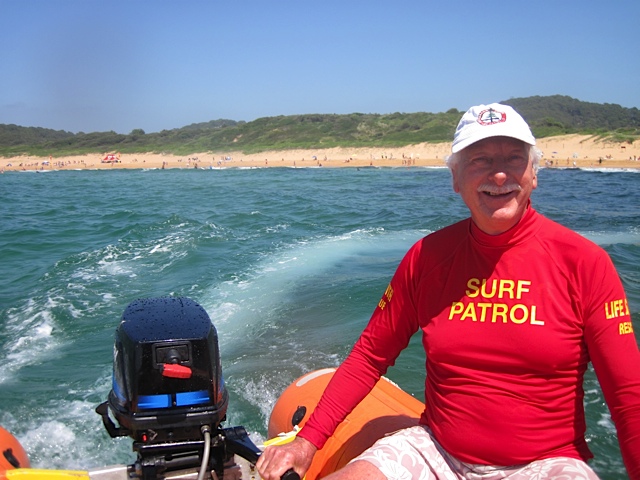
Roger in IRB photo by Geoff Searl summer 2010-2011
Where and when were you born?
In Sydney, Crown Street Hospital Surry Hills, 1946. The first five years of my life we lived with my grandparents in their terrace house in Surry Hills. We then moved to Gladesville where I went to school and Hunter’s Hill High, where I got into swimming and played first grade water polo at High School - which developed my swimming stamina for surfing and rescues later.
Around that time a mate said he had a mate with a car who was going to the beach and he had a couple of surfboards – do you want to come. I said ‘too right’. We used to go surfing almost every weekend and we’d go everywhere – south side, north side ....
Which was your favourite wave?
I had so many, North Av. of course, but also on the north coast and south coast – we’d go for trips away – this was during the early 1960’s when malibu board riding was just starting to become popular.
Angourie - 1967
My first ride on a malibu was down the south coast– and I thought: wow! I did try a toothpick board once prior to that but they were way too heavy and unrideable for kids like me, and virtually had to be stored at a surf club because of their size (16 ft long).
Were you a hippie Roger?
Haha...No. I was a responsible young man... at times with longish hair haha. After I finished school and started work I decided I really wanted to go to Uni so passed the Sydney uni matriculation exam and decided to go to UNSW. I did all my University degree part-time, with lectures etc at night after working during the day.
Very good for character building, earning your degree that way.
What did you get a degree in?
Economics.
That’s what you were interested in?
Absolutely. Economics concerns all aspects of life.. It doesn’t matter what you think of, economics are or can be involved. I’m still working fulltime, applying economic principles in my work, but economics also matches my range of personal interests which is The World and Everything In It.
How did you come to live in Avalon?
My dad was a city boy, (part of several generations from the 1830’s on who had lived in Sydney) and he first introduced me to the beach and surfing (besides cricket, footie etc).
We spent many happy holidays at Narrabeen. My mother was from the country, north-western New South Wales (her side of the family are also long time Australians, having been up in that area since the early-mid 1800s) so I’d spend a lot of holidays when young up in the bush with my other grandparents, cousins etc and I also loved the bush.
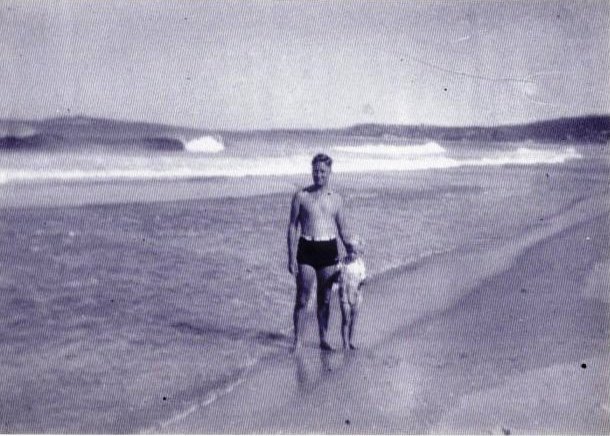
Dad and me Narrabeen c. 1949 or 1950
There came a time when I was younger when I was thinking which direction should I take in life- ‘the bush’ or ‘the coast’? ... The coast won out. I was really hooked on surfing and busy studying etc..
There was one weekend where I had an exam coming up, my mates had gone up the coast surfing and I’d stayed home studying. But I still needed to have a bit of a break so I drove out to the beach and the surf was dead flat. I’m lying on the beach at Newport thinking ‘this is pretty useless, I should be studying’, had a swim and thought if I’m not studying I should do something constructive... I’ll go and have a look for a block of land... and I’d always liked Avalon and its surf.
So I went to Stapleton’s Real Estate office in Avalon Parade. I walked in wearing a dirty old pair of jeans and old t-shirt, and asked the bloke who was sitting down having his morning coffee with a biscuit: ‘Do you have any blocks of land for sale that overlook the ocean?’.
He looked me up and down, unimpressed. He didn’t even get up from his chair, pulled out a piece of paper, drew a little mud map on it, handed it to me and said ‘Here, go and have a look at this’. – That was the level of salesmanship he thought I deserved! haha.
I drove up there, climbed up on the block and thought ‘Crikey, I can see the ocean from here... And I can see the beach... And I can see Pittwater!
I decided then and there: This is where I want to live!1969 that was – I was 22 at the time.
So I went back down to the Real Estate agent and said ‘I’ll take it’ – He nearly dropped his biscuit. He said ‘I’ll need a deposit’ – I said ‘how much?’ reached into my wallet and told him I had 20 bucks, would that do? And he said yes!
How did you become a member at Avalon Beach SLSC?
When my eldest daughter was 10, this would have been 1986, she asked: ‘dad, can I join Nippers?’. I said ‘yes’, knowing that meant a commitment from me as well on Sunday mornings and thought there goes my freedom to cruise around checking for the best waves... oh well..
I have always encouraged my daughters in everything they’ve done, so we went down to the surf club and I found I knew a few of these blokes and other families, and they were good fun to be with.
One day one of them said ‘A few of us are going to do our Bronze – do you want to do that?’ – I said I didn’t have time and wouldn’t be fit enough. They said I would be, and as they were board riders too, I said ‘Ok then – but I’m not going to do Patrols or anything like that’.
Another case of famous last words?
Yes; you start off helping at Nippers, then you’re an Age Manager, then get your Bronze, decide you’ll do Patrols...“but only as long as I’m having fun’..., next thing you’re Patrolman of the Year - twice.
Your other daughters join Nippers and you’re enjoying it so much having fun, that you do more – Advanced Resuscitation, then we needed a driver on our Patrol so I did my IRB licence. I found driving IRBs to be great fun and a real challenge - driving a boat in the surf is quite different to smooth/still water - and was a surfing-related skill that gave me a lot of pleasure performing many rescues.
Before you know it you’re Patrol Captain and then next thing, Club Captain and longest running Club Captain the club has ever had in its 89 year history.
You’re still there now doing voluntary work?
Yes; I said to one of the older blokes: I’m only going to do this so long as I’m having fun.
And you’re a Life Member too.
Yes, I’m very proud of that. It’s a great honour. – It’s a fantastic club.
What is the best thing about being in surf lifesaving to you?
The friendships you form – they are lifetime friendships – when you do lots of rescues with people you become very close. Some of us on our patrol have been around and on the same Patrol together for quite a few years and know each other very well. You become very effective as a team.
For me it’s all about doing responsible community service while having fun, and catching up with mates.
Have you had to do any difficult rescues?
Lots over the years; but this is what you’re trained for, keep fit for. Several times as Club Captain when I’d say ‘well done’ to young blokes who’d just performed a rescue, they would say ‘that wasn’t much of a big deal, I just paddled out and got the person’. I would say to them, it may not be much to you, but to the person you just brought in, it means a lot, because they couldn’t get in by themselves.
They were going to drown if somebody didn’t bring them in…
Correct. I once had a lady come up... we were in the duck at the time and had just picked her young son up in shallow water, he was on a boogie board and floating out in the rip...and she came and thanked us about three times, said we were angels. I explained we didn’t do that much, to which she replied ‘But I can’t swim!’; As far as she was concerned, her little boy was going to drown.
It’s ‘thanks’ like that make you realise it’s all about what you can do for other people by using your own knowledge of the surf and the beach and everything else you learn. We may take it for granted because we’re around the beach a lot and are confident in the surf, but the fact remains a lot of people don’t have that knowledge of rips and what are safe or unsafe places on the beach.
Avalon Beach can be a dangerous beach. It has a rating of 7 - one of the most dangerous - on SLSA’s Australian beaches safety ratings.
You also become part of the community of Avalon in joining the club though – it’s not just having Maxie Watt as your neighbour – there’s all the rest of those here who are part of that club…
Absolutely - Avalon Beach SLSC is a very local club, which is great. I was already part of the local Avalon boardriding community at North Av and it’s pleasing to me to see that today many of our surf club members are also boardriders. We even have a couple of former pro surfers in the club, one of whom recently told me that doing his bronze and joining the surf club is the best thing he’s ever done. I would also agree with that assessment for me.
If you could give people an insight into how to stay safe on the beach this Summer, what would that include – ‘swim between the flags’?
Yes- that’s a good simple message for anyone who isn’t familiar with the surf. No alcohol on the beach would be another good piece of advice; there’s nothing worse than trying to rescue a drunk. Be aware of your own limitations as well – having surfed in big swells I’m fully aware that I am ‘maturing’, and am now more discerning in the kind of surfs I go out in, both in bodysurfing and when riding my board. The waves are getting smaller and smaller for me!
But it’s also great to see some of my contemporaries from North Av. who are far fitter boardriders than me, as they’ve been doing it on a daily basis.
Now, the fishing – and your fishy tales…
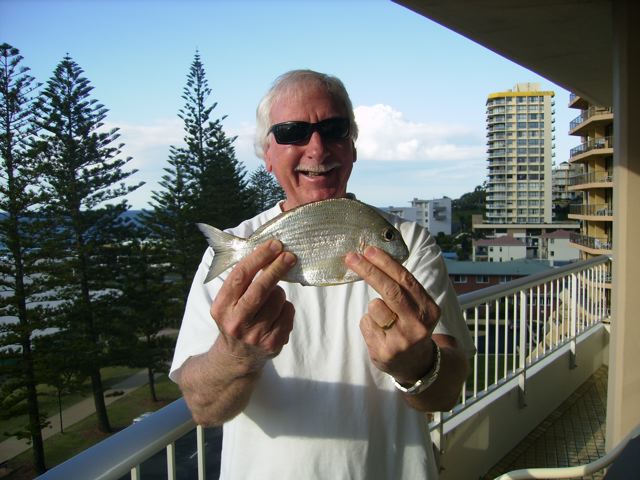 Yes, my favourite was the one I caught with my bare hands. I like eating fish and my dad taught me to fish....... The fish I caught with my bare hands was a few years ago, when surfing up at Rainbow Bay in Queensland. I’d just finished a ride and was in the shallows and saw something sparkling in the water beside me.
Yes, my favourite was the one I caught with my bare hands. I like eating fish and my dad taught me to fish....... The fish I caught with my bare hands was a few years ago, when surfing up at Rainbow Bay in Queensland. I’d just finished a ride and was in the shallows and saw something sparkling in the water beside me.
I looked down, saw it was a fish, reached down and grabbed it – it must have run into my board and stunned itself.
So I picked it up, held on tight to it – it was still alive but it wasn’t doing much and it was a nice bream – there’s dinner! Very tasty.
What is your favourite place or places in Pittwater and why?
I like all it - the coast, Pittwater, the bush - Avalon Beach – one of my favourite places is North Av. I love going for a surf there, being there, talking with my mates. You just have to go to North Av. car park or the surf club or into Avalon and you see someone you know and you have a chat, which I think is great – Avalon is a terrific community because of that.
I also think that’s what makes the surf club so strong too – people are connected within the local community through the schools, the high school, through their kids at the surf club or the footy club and this creates a great community spirit. I hope it stays like that for a long time... for good.
What is your motto for life or a favourite phrase you try to live by?
Ha! That’s a hard one...I guess I have different ones for different situations: Have fun. Enjoy life. Do your best. Never give up. Be positive and optimistic. Look after yourself and your family and other people – do things for yourself, your family and the community at large.
Above: Ocean Beach (top) - The Bower both 1964
Below: Crescent Head quite recently
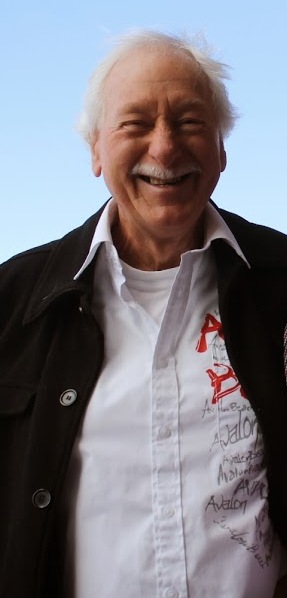 Joined Club – 1986 - Nippers Parent; Water Safety, Junior Activities
Joined Club – 1986 - Nippers Parent; Water Safety, Junior ActivitiesBronze Medallion – December 1987
Club Positions held
Junior Activities
Water Safety 1986/87-94/95
Age Manager (jointly shared) 1987/88-91/92
Branch Delegate 1987/88-88/89
Registrar 1989/90-92/93
IRB Captain 1990/91-93/94
Senior Club
Patrolling member 1987/88 – 2014
IRB Driver 1988/89 - 2013
Patrol Captain 1990/91-91/92
Committee Member 1990/91-91/92
Branch Delegate 1992/93
Publicity Officer 1995/96-1999/2000; 2005-06-
Board and Ski Captain 1995/96
Assistant Secretary 1996/97
Club Captain 1992/93-1999/2000 - Longest serving Club Captain in Club’s 89 year history
Chairman, Beach Management – 2000/01
Life Membership Committee (as Club Captain/Chair Beach Management) – 1992/93-2000/01
Avalon Beach Surf Swim Committee - Inaugural Committee Member 1992/93
- Water Safety Coordinator 1992/93-1999/2000
Australian IRB Titles at Avalon Beach Committee – 1997-98
Club Delegate to Surf Life Saving Australia National Conference, Narrabeen – 1998
As Club Captain, coordinated the Club’s team effort winning the inaugural SLS Sydney Northern Beaches “Most Outstanding Club” Award in 1995/96 among the 21 clubs on the Northern Beaches.
Surf Life Saving Australia Awards
Bronze Medallion - 20 December 1987 (N53824)
Advanced Resuscitation Certificate – 9 March 1988 (N0 11257)
IRB Driver’s Certificate – 2 September 1989 (N0 02716)
Radio Operators Certificate – 25 April 1992 (N0 04287)
First Aid Certificate – 2 March 1993 (N0 01161)
Gold Medallion (Advanced Life Saving Certificate) – 13 April 1996 (N311)
(SLSA’s highest proficiency award - one of first two such awards in the Club’s history).
Club Awards
Patrolman of the Year Award twice – 1990/91 and 1991/92
Norman Cook Award for Most Outstanding Club Member twice – 1994 and 1997
President’s Award for Outstanding Service – 1998/99
SLSNSW
Finalist, NSW Volunteer Lifesaver of the Year 1996/97 (State Championships, Mollymook).
Competition – Representing the Club
Competitor, SLSA Australian Master’s Titles 1992 – board (finalist), surf swim (finalist) - the first of the Club’s Australian Masters teams.
Competitor, SLSSNB Branch IRB Titles – driver (finalist)
Competitor, Club Championships.
Current
Life Member Avalon Beach SLSC (July 2007)
Publicity Officer
Active Reserve Patrol Member.
Okanui ad in a 1980s surfing magazine - my neighbour across the street went on a surfing trip to a remote island in the Philippines - he said he caught a light plane from Manilla, then a boat, trekked through the jungle, avoided armed rebels, made it to the grass hut they were staying in, opened up a surfing magazine someone had left behind and there was a photo of me looking at him! Couldn't get away from me Haha.
